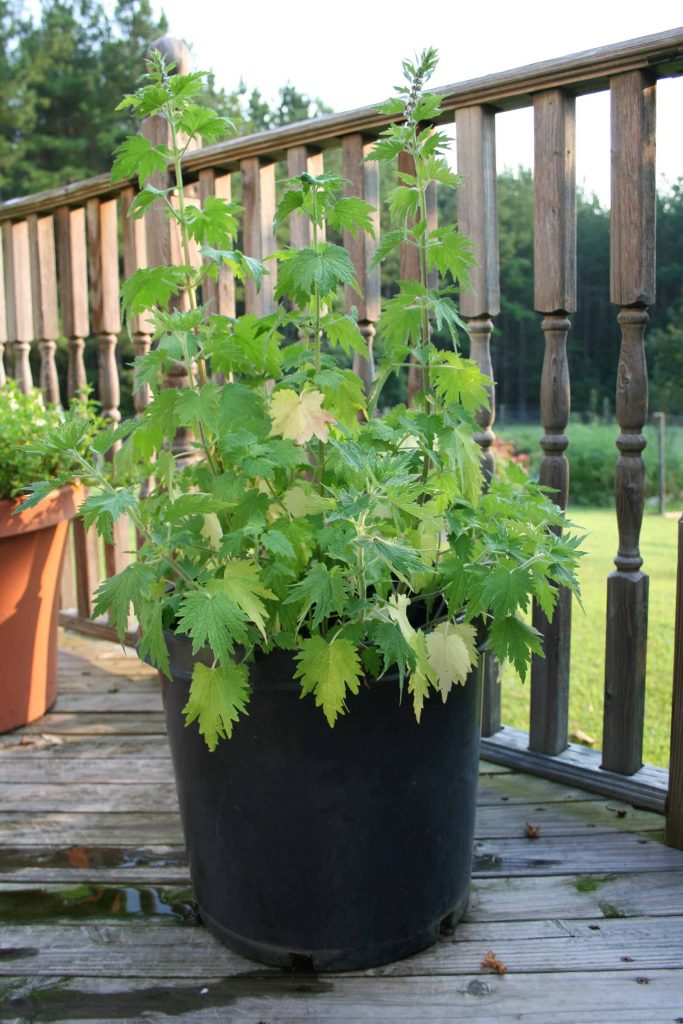Growing motherwort herb yourself is a wonderful way to attract pollinators to your garden, as well as to stock your herbal pantry. It’s not difficult to grow either, considering many people know motherwort as a common weed. Of course, I have to disagree with that viewpoint because motherwort herb has been my favorite herb for many, many years.
About The Motherwort Plant
Motherwort plants grow about 5 feet tall. It’s a member of the mint family, and as such, it has a square stem that is a distinguishing mark of mint. You’ll find motherwort blooming from mid-summer through early fall along roadsides as well as damp areas like sound streams and riverbanks. Neglected farm fields often have an abundance as well.
The Latin name, Leonurus cardiaca, tells us a bit about this medicinal herb. The genus name Leonurus means ‘lion’s tail’. This comes from the shape of the leaves and is a good clue to help you remember how to identify motherwort plants growing wild. The species name cardiaca means ‘for the heart’, which gives us a hint of what this herb is most commonly used for.
In parts of Asia, motherwort is considered the herb of longevity. According to legend, long ago there was a town whose spring ran through a patch of motherwort. All who drank from the spring lived to be over 100 years old.

Growing Motherwort Herb
The motherwort plant is a perennial herb that is easy to grow from seed and is hardy to zone 3. It isn’t a picky plant. For the best results, you’ll want to select a location that is well-drained with rich soil for planting.
Some people prefer to cold-stratify seeds before planting. Soak the seeds for 24 hours. Then put them in a bag in the refrigerator for 10 days, keeping them moist. You can skip this step if you plant seeds in the late fall. Allow them to rest underground through the winter.
However, often the seeds you purchase have already been cold stratified. If that is the case, you can direct seed outdoors when all danger of frost has passed. They should germinate in a week or so. If you like, you can thin the seedlings to about two to three feet apart.
To get an early start, consider planting seeds in seed trays or pots in late winter. Seeds should be planted about an eighth of an inch into the soil. Keep them moist and they should germinate within two to three weeks.
Once seedlings reach around six inches tall, you can begin hardening them off so they can adjust to the climate change from your growing area to the outdoors. Depending on your weather, this could take a week or two. Then you can plant your motherwort herb directly into the garden.
Motherwort Care
Once established, motherwort plants need little care. You will want to weed around them and water them as they are getting established. After that point, they really only need to be watered if there is a bad drought.
Motherwort herb will self-sow, but they also spread through rhizomes. Rhizomes are horizontal underground stems that continually grow and send up new shoots. This means you may find that your motherwort bed is getting overcrowded at some point.
To prevent self-seeding and keep your plants from taking over, you can cut it back about three to five inches to keep the seeds from maturing and falling to the ground. Rhizomes are not so easily tamed so some people prefer to plant their motherwort in pots. Fortunately, you can also dig up and divide the rhizomes, to relocate them to other areas of your garden or share with friends. This is best done when motherwort plants are dormant in the late fall or early spring.




